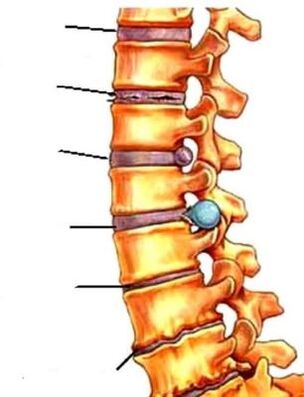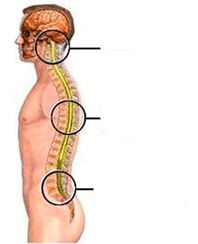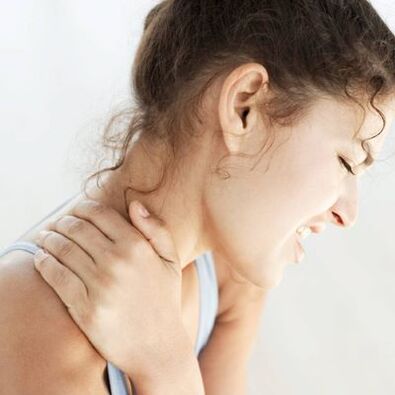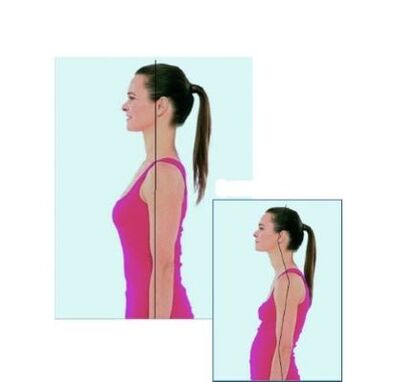Osteochondrosis is a concept used to denote a group of diseases associated with degenerative and dystrophic changes in the structures of the spine. First of all, the intervertebral discs suffer, and with the development of the disease, the vertebrae themselves. Degenerative are the changes associated with the processes of tissue wear, aging, loss of original properties and dystrophic changes caused by nutritional disorders of the tissues. Thus, the term osteochondrosis unites most of the non-inflammatory pathologies of the spine.

The spinal column forms the backbone of the skeleton, linking the various parts of the skeletal system. Supports the head, ribs, and muscles attached to it. The spinal cord runs through the spinal column, through which the brain is connected to various parts of our body. Man is the only bipedal creature in the world and the spine is designed to provide bipedal locomotion. Therefore, the spinal column has a curved shape, reminiscent of the letter S of the Latin alphabet and is not a rigid bar, but a complex structure consisting of elements joined together - vertebrae. This structure of the spine allows us to perform various movements, be flexible and absorb shocks and blows. The function of the shock absorbers is performed by the intervertebral discs, cartilaginous layers that consist of the nucleus pulposus and the fibrous ring that surrounds it. The nucleus takes over and absorbs load, and the annulus fibrosus prevents the nucleus from flattening under pressure.
A decrease in the elasticity of the intervertebral discs can become the beginning of a wide range of problems. Unable to withstand the load, the intervertebral discs begin to deform, the spine loses its correct shape. The progression of the disease leads to further destruction of the intervertebral discs, the fibrous ring ruptures, the vertebrae come into strong contact with each other, it is possible to pinch the nerves that connect the spinal cord with various parts of the body. This is how osteochondrosis develops. Intervertebral hernias occur and inflammation often develops. Deprived of shock absorption, the vertebrae can flatten and together their joints form scar and bony growths.
Osteochondrosis is one of the most common diseases. Only cardiovascular diseases are more common. According to some estimates, every second inhabitant of the planet suffers from osteochondrosis. Osteochondrosis is more common in women, but in men, its manifestations are, on average, more painful.

What is osteochondrosis?
Osteochondrosis affects various parts of the spine. According to the department that suffered the most, there are:
- lumbar osteochondrosis - occurs most often;
- cervical - ranks second in "popularity";
- sacrum;
- chest;
- generalized osteochondrosis, in which several parts of the spine are affected at once;
- cross pathologies (lumbosacral or cervicothoracic).
Causes of osteochondrosis.
The causes of osteochondrosis are quite diverse.
First, with age, the elasticity of the intervertebral discs is gradually lost. This means that our back needs special attention. Prolonged stay in a position that causes the spine to tilt can cause irreversible changes. You should avoid sitting in an asymmetrical position, combat the habit of lying on one side, carrying a load (for example, a bag) in one hand.
A sedentary lifestyle has a detrimental effect on spinal health. It is necessary to move, however, physical activity should be moderate. The spine must have the opportunity to recover from the load, and it is also advisable to avoid injuries that also lead to the development of spinal pathologies.
The second group of reasons is associated with metabolic disorders and malnutrition. Foods rich in carbohydrates and fats saturate the body with calories, which we, in our sedentary life in the city, often simply have nowhere to spend; As a result, energy is deposited in the form of adipose tissue, creating excess weight. Obesity is an increased load on the spine, which leads to the development of osteochondrosis. In addition, such a diet usually contains an insufficient amount of trace elements (calcium, potassium, phosphorus, magnesium, manganese and others), which are so necessary for strengthening bone tissue. Being overweight is often caused by endocrine diseases. At the same time, a violation of energy, water or mineral metabolism can also adversely affect the tissues involved in the structure of the spine.
Factors that contribute to the development of osteochondrosis can be:
- flatfoot;
- hormonal changes;
- infectious diseases;
- local circulatory disorders,
as well as some other factors.
Symptoms of osteochondrosis.

In the initial stage of osteochondrosis, there are no pronounced symptoms. It is possible to assume the development of osteochondrosis in the case of:
- dull pain in the back (in the area of the affected area of the spine);
- feeling of heaviness in the back, constant tension of the spinal muscles;
- numbness of the muscles, the appearance of "goose bumps". In such cases, it is often said that "the back is numb";
- crunch when turning the body and neck;
- headache, dizziness, tinnitus (typically with cervical osteochondrosis);
- painful pains in the chest area (typically with thoracic osteochondrosis).
At the first appearance of such symptoms, it is advisable to be examined by a neurologist.
Further development of the disease manifests itself in symptoms that carry significant discomfort:
Back pain
There is severe pain in the back (along the spine). Pain can radiate to the limb.
Numbness in the fingers
A typical manifestation of osteochondrosis is numbness of the fingers and toes.
Restriction of motor activity
Even with minimal physical exertion, the pain increases (for example, as a result of shaking and shaking when traveling in transport). Pain causes significant restrictions on mobility and motor activity.
Methods for the diagnosis of osteochondrosis.
The main role in the diagnosis of osteochondrosis belongs to instrumental studies: radiography, computed tomography, magnetic resonance imaging.
It may be necessary to confirm that the observed symptoms are not caused by other medical conditions. For differential diagnosis, a general and biochemical blood test, a general urinalysis, and ultrasound examinations of internal organs are carried out.
Spine x-ray
X-rays are taken of problem areas in the spine. The department to be examined is determined based on the patient's complaints.
Computed tomography (CT)
Computed tomography (TCMC) makes it possible to obtain a more informative picture of pathological processes and determine the degree of their severity. In particular, TCMC can detect an intervertebral hernia.
Computed tomography is done when x-ray data is insufficient.
Magnetic resonance imaging (MRI)
MRI is the most informative method of diagnosing osteochondrosis. In some cases (for example, with suspected osteochondrosis of the thoracic spine), magnetic resonance imaging cannot be dispensed with. Magnetic resonance imaging allows the visualization of cartilage and soft tissues, from which it is possible to locate the source of the problems as precisely as possible and establish the cause of the disease.
Methods of treatment of osteochondrosis.
It is advisable to start the treatment of osteochondrosis as soon as possible, since pathological changes in the spine are irreversible in most cases. Therefore, the treatment is mainly aimed at eliminating pain and preventing further development of the disease.
The course of treatment, as a rule, is complex and is prescribed individually, depending on the patient's condition. The clinic uses for the treatment of osteochondrosis:
Drug treatment
First, the treatment is aimed at stopping (eliminating) the pain syndrome. Anti-inflammatory drugs and muscle relaxants (drugs that relax muscles) are used.
Also, in the treatment of osteochondrosis, drugs that improve blood circulation, chondroprotectors (drugs that restore cartilage tissue), vitamin D and calcium preparations are used.
Massage
Massage for osteochondrosis relieves muscle tone, stimulates blood flow in the spine and improves metabolic processes. This serves to strengthen the vertebrae and intervertebral discs, suppress inflammation, and reduce pain.
Physiotherapy
With osteochondrosis, physiotherapy methods such as electrophoresis, phonophoresis, UHF, magnetotherapy are used.
Reflexology
Reflexology for osteochondrosis is used as an additional therapeutic method. Acupuncture helps to relieve pain, reduce inflammation, normalize blood circulation, and increase the effects of the medications used.
Physiotherapy

Physiotherapy for osteochondrosis is primarily aimed at eliminating pain and restoring mobility of the spine. A specially selected set of exercises is used.
Prevention of osteochondrosis.
As a prevention of osteochondrosis, the doctors of the clinic recommend:
- maintain correct posture. Posture is the usual position of the body while standing. Ideally, the head and back should be on the same vertical, the shoulders should be on the same level, the stomach contracts, and the chest rises. The habit of the body is developed through exercise, therefore, the posture should be monitored, not to hunch or stoop;
- lead an active lifestyle, do gymnastics;
- it is useful to hang it from a horizontal bar, while the spine is stretched;
- sleep on a hard mattress. It is advisable to buy an orthopedic mattress and pillow;
- Eat a balanced diet, eating foods that contain sufficient amounts of vitamins and minerals.

























